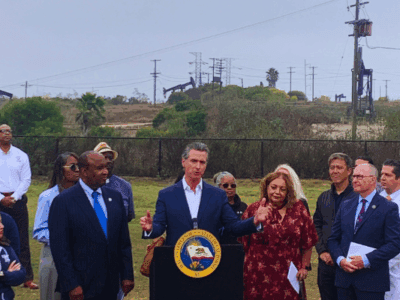China and the Environment: Some Progress on Lead Pollution
It’s a pleasure to be joining the excellent group here at Legal Planet. My focus will largely be on issues related to China and its environmental and energy challenges.
I returned to the U.S. last month after seven years working in China on environmental protection and legal reform (mostly for the Natural Resources Defense Council). Over the last few years, as with most things in China, the developments in the environmental, climate, and energy arenas have moved incredibly quickly. I hope to capture some of these developments here at Legal Planet and provide some context about what it means for China, the U.S., and the world. My strongest impression looking back on my time in China is of the tremendous number of people I came into contact with – environmentalists, judges, lawyers, government officials, journalists, teachers, citizens, businesspeople – working against tremendous odds with limited resources to make the environment a little bit better. I hope to highlight the work these folks are doing from time to time as well.
* * * * *
 I saw a piece of news this morning that probably qualifies as a silver lining on a very dark thunder cloud. On August 2, China’s Ministry of Environmental Protection (MEP) announced the closure of 583 lead-acid battery manufacturing plants, and stoppage of production at 1015 additional plants. Only 252 plants were allowed to continue operations. The stoppages accounted for over half of China’s lead-acid battery production capacity, according to one source (Chinese only).* Experts expect many of the suspended plants to be back in operation this year though.
I saw a piece of news this morning that probably qualifies as a silver lining on a very dark thunder cloud. On August 2, China’s Ministry of Environmental Protection (MEP) announced the closure of 583 lead-acid battery manufacturing plants, and stoppage of production at 1015 additional plants. Only 252 plants were allowed to continue operations. The stoppages accounted for over half of China’s lead-acid battery production capacity, according to one source (Chinese only).* Experts expect many of the suspended plants to be back in operation this year though.
This shut-down campaign has been part of the government’s response to a series of lead poisoning incidents over the last few years. The poisoning incidents have involved thousands of children and led to numerous incidents of unrest around the country. Since late 2009, the government has been preparing a response, though the substance of that response has been treated as a “state secret” without disclosure to the public (beyond press release-style media summaries of the most general nature). Indeed, because lead poisoning incidents are considered politically “sensitive” in China with potential impact on “social stability,” much of the work, from scientific testing to policy and law development, has been carried out outside of public view.
A New Level of Environmental Disclosure
So it comes as good news that the August 2 MEP announcement was accompanied by an unprecedented (for China) level of disclosure, including plant names, addresses, production status (suspended or operating), production capacity and whether air and water pollution violations exist. In the past, lists of environmental violators were typically disclosed with very little information if anything was disclosed at all. Sometimes even names were withheld, leaving the public with the knowledge that only some violation by some entity had occurred. My team in Beijing made a request to MEP two years ago for lists of heavy metals factories that had been shut-down (according to a MEP press release). That request was denied at the time based on a rather implausible legal explanation. We never did obtain that information.
This additional data disclosure will allow for easier public supervision of environmental performance at these plants by local residents, other businesses, and media. It will be possible to see if plants that should be closed have illegally started operation again. The public can keep watch on factories that were supposed to have remedied legal violations to help keep them honest. This will, of course, require citizens to use this information. But parents who fear that their children are being poisoned tend to be extremely motivated advocates.
(screenshots of the disclosure on lead battery plant enforcement)
This new level of information disclosure by MEP has the potential to do a great deal of good. Indeed, poor transparency – put more simply, hiding problems from public view – has been a major contributor to many of China’s worst disasters, including the recent Wenzhou high-speed rail crash and Bohai oil spill to name a few. Of course, transparency is only a partial solution. Local protectionism, capacity issues, corruption, and a host of other issues constrain environmental improvements in China. But this is nonetheless a step forward.
In my experience (my example above notwithstanding), MEP has generally been at the forefront of pushing for greater environmental transparency. Many Chinese environmental regulators recognize that publicizing information makes it easier for them to do their jobs because a variety of stakeholders (the public, media, businesses themselves) can utilize that information to improve environmental protection. Other parts of China’s government would do well to learn from MEP’s example.
* China accounts for 45% of global demand for lead. The battery industry accounts for 70% of lead demand in China.
Reader Comments
One Reply to “China and the Environment: Some Progress on Lead Pollution”
Comments are closed.









Thanks for this informative post, Alex. More disclosure and transparency are certainly steps in the right direction.